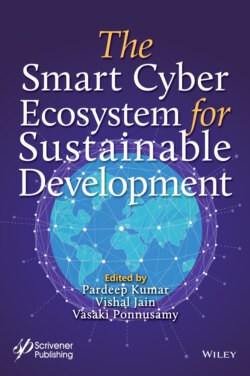Читать книгу The Smart Cyber Ecosystem for Sustainable Development - Группа авторов - Страница 67
2.7.3 Cognitive Radio Networks
ОглавлениеCurrently, ML-based spectrum sensing techniques are proposed. The existence of PUs is determined through two phases. In the first, signal features are extracted employing one of the spectrum sensing methods. In the second phase, decisions are made about PUs’ activity by applying ML algorithms. The authors of [68] used the energy detection approach to extract signal features which were used to train the K-mean-based ML model, whereas [69] proposes a probability vector as features of ML method. Probability vector has shown superior performance, whereby it alleviates the dimension of the feature vector and, hence, reduces the time duration of the ML model. In [70], the authors propose to use the eigenvalues/eigenvector as features, whereby these features are derived from constructing covariance matrix samples from different SUs’ signals. The authors of [71] derived the eigenvalues/eigenvector features by applying principle component analysis of the signal samples. Based on information geometry theory and application, the work in [72] innovate novel features by measuring the distance between two probability distributions on a statistical manifold. The research efforts in [73–76] focus on finding the circularly characteristics that help in differentiating between the transmitted and noise signals. In their models published in [77, 78], the authors study the case where SUs catch more than one PU signals, whereas [79] investigated the mobility issue of CR systems.
